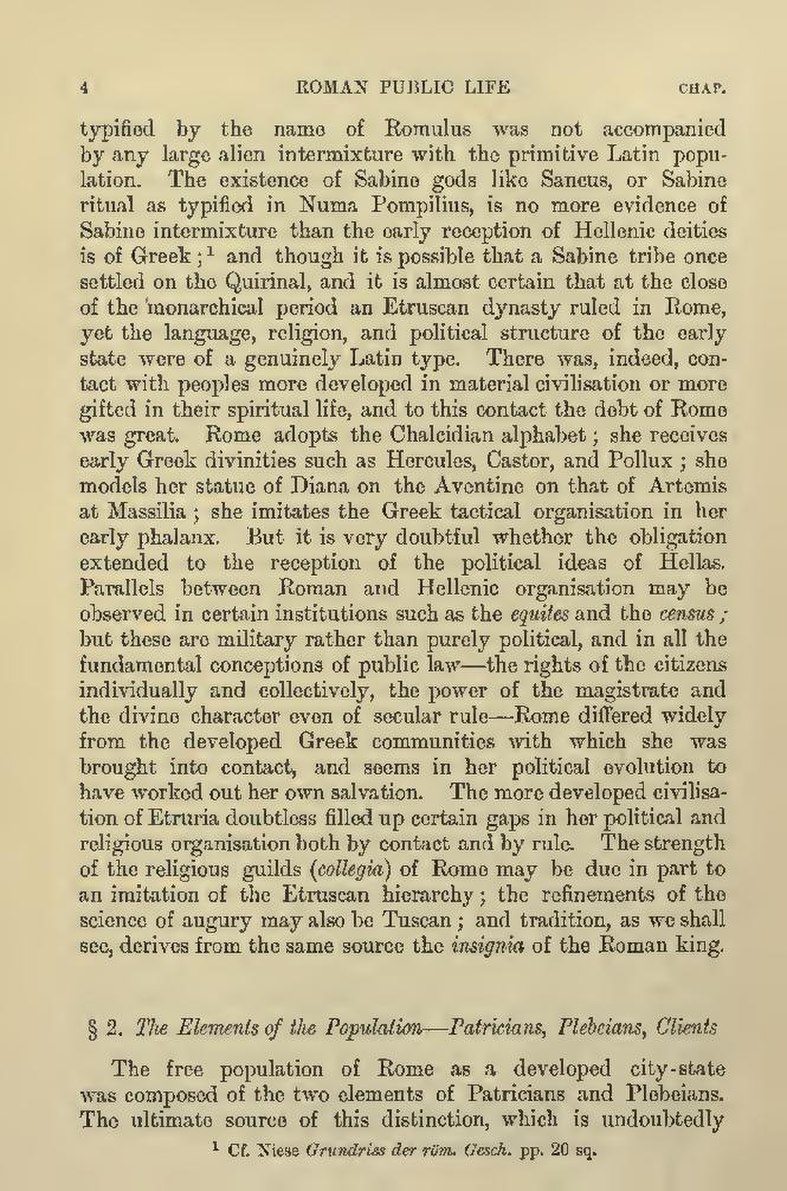typified by the name of Romulus was not accompanied by any large alien intermixture with the primitive Latin population. The existence of Sabine gods like Sancus, or Sabine ritual as typified in Numa Pompilius, is no more evidence of Sabine intermixture than the early reception of Hellenic deities is of Greek;[1] and though it is possible that a Sabine tribe once settled on the Quirinal, and it is almost certain that at the close of the monarchical period an Etruscan dynasty ruled in Rome, yet the language, religion, and political structure of the early state were of a genuinely Latin type. There was, indeed, contact with peoples more developed in material civilisation or more gifted in their spiritual life, and to this contact the debt of Rome was great. Rome adopts the Chalcidian alphabet; she receives early Greek divinities such as Hercules, Castor, and Pollux; she models her statue of Diana on the Aventine on that of Artemis at Massilia; she imitates the Greek tactical organisation in her early phalanx. But it is very doubtful whether the obligation extended to the reception of the political ideas of Hellas. Parallels between Roman and Hellenic organisation may be observed in certain institutions such as the equites and the census; but these are military rather than purely political, and in all the fundamental conceptions of public law—the rights of the citizens individually and collectively, the power of the magistrate and the divine character even of secular rule—Rome differed widely from the developed Greek communities with which she was brought into contact, and seems in her political evolution to have worked out her own salvation. The more developed civilisation of Etruria doubtless filled up certain gaps in her political and religious organisation both by contact and by rule. The strength of the religious guilds (collegia) of Rome may be due in part to an imitation of the Etruscan hierarchy; the refinements of the science of augury may also be Tuscan; and tradition, as we shall see, derives from the same source the insignia of the Roman king. § 2. The Elements of the Population—Patricians, Plebeians, Clients
The free population of Rome as a developed city-state was composed of the two elements of Patricians and Plebeians. The ultimate source of this distinction, which is undoubtedly
- ↑ Cf. Niese Grundriss der röm. Gesch. pp. 20 sq.
